Small and powerful: Smith & Wesson Shield Performance Center in 40S&W
40S&W has long been my favorite caliber. My infatuation with military surplus. You can find great deals there - and
since 40 has been dominating the law enforcement market for a couple decades now, a lot of great guns are available
on the cheap in this caliber.
But in addition to price and availability, the power makes it a good choice for a trail gun. Like most Seattleites,
I live in a very safe area of a very safe city, so self defense is not among the reasons I own firearms. But living
in Seattle also means a lot of great outdoors - so protection against wild animals while hiking is actually a
consideration. And here the extra power of a 40 can make a difference.
Recently I have been playing with small guns in powerful calibers a lot - mostly because I got a few models in the
store that piqued my interest. This series of posts is about these guns.
Smith & Wesson M&P Shield is a relatively recent addition to the small gun series. It is
one of the smallest 9mm pistols, probably the smallest 40S&W pistol, it is relatively
inexpensive, and available in many modifications. Now wonder it is one of the most
popular self defense pistols in our store!
I like to own what I sell, and I have been selling a lot of Shields - so when a Performance
Center in 40S&W popped up at the distributor, I got 2 for the store, and one for myself.
Performance Center is Smith & Wesson's custom shop, and the custom features of the gun included
a serrated sights with fiber-optic inserts, custom trigger (standard M&P triggers right out
of the factory are very gritty; they wear in with time), and ported barrel which is supposed
to help with the recoil.
Seeing as pictures are the most important part of every review, here is the gun:
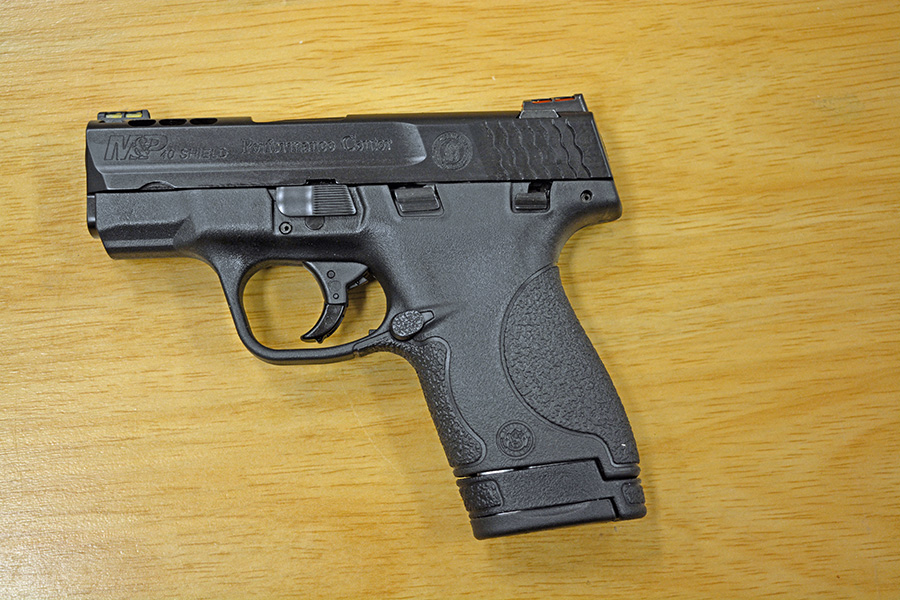
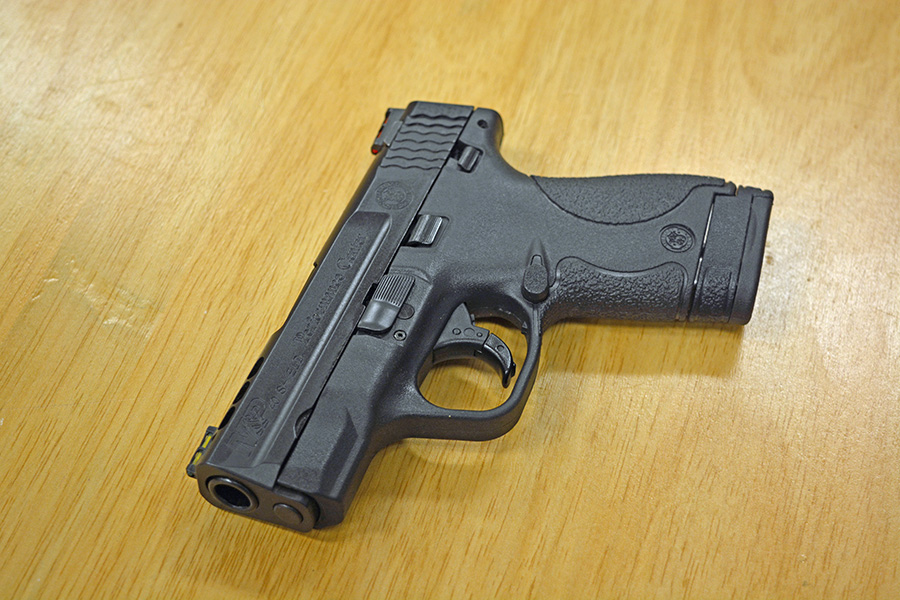
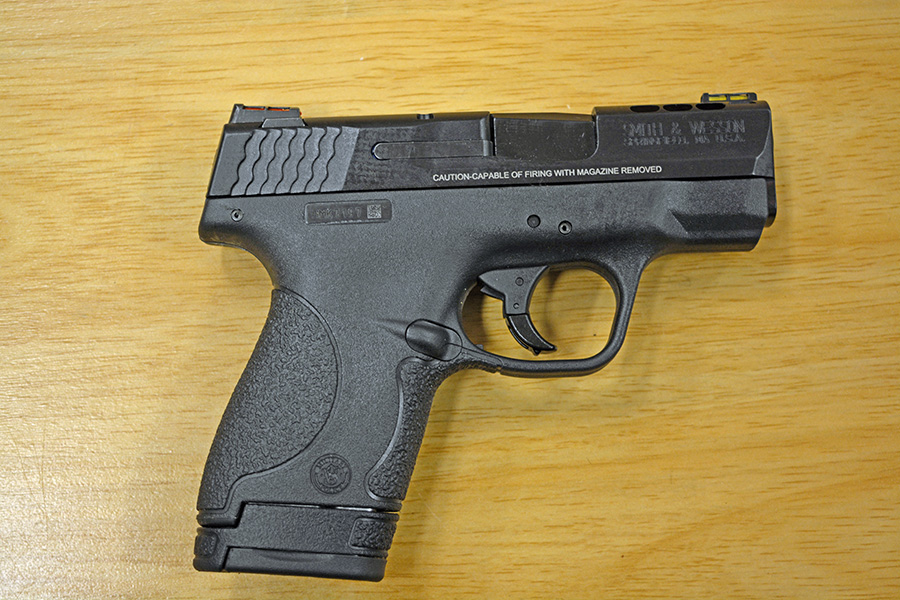
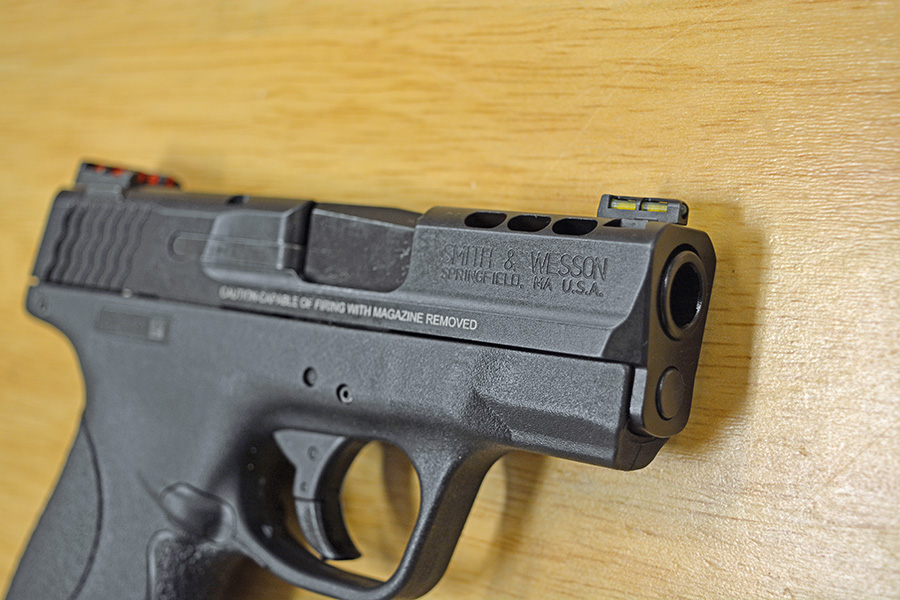
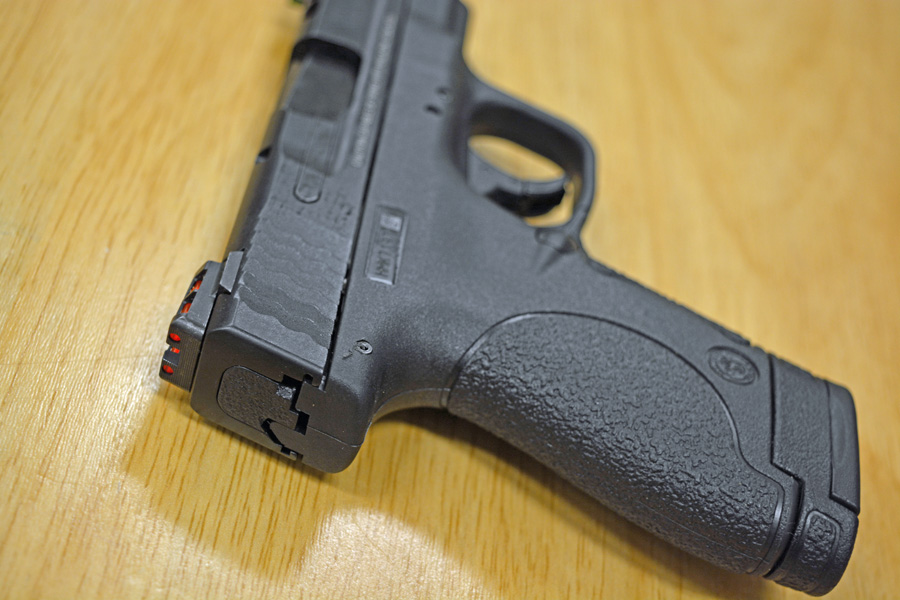

The gun is very light, weighing just under 18oz - just over 500g. Being a Performance Center
gun, the trigger is crisp and light, at only 5.5lb. I chose the version with thumb safety
because I like redundancy in safety (and also because this is how Performance Center guns
come).
At the range
I shot the gun from semi-supported position - my hands were resting on a support, but the
gun was not touching anything but my hands.
The recoil was actually not bad - definitely spirited, the gun jumped in my hands, but not
nearly to the point where you would be afraid of losing the accuracy. Very tolerable.
Less than majority of blowback guns in smaller calibers such as 380 or 9x18 Makarov.
On the same day I shot a 9mm Performance Center Shield owned by a friend, and the recoil
was essentially non-existent - not dissimilar from a 22LR gun.
I have fired a total of 75 rounds from Federal, Winchester, and CCI, and there were zero
problems - the gun was 100% reliable - though I always put only 5 rounds in the magazine
at a time.
The shooting was at 25 yeards, and a standard NRA 25y pistol target, with the six-o-clock
hold (point of aim just under the black of the target).
Three types of ammunition were used, 25 rounds of each were fired at each target.
CCI Blazer (aluminum casing)
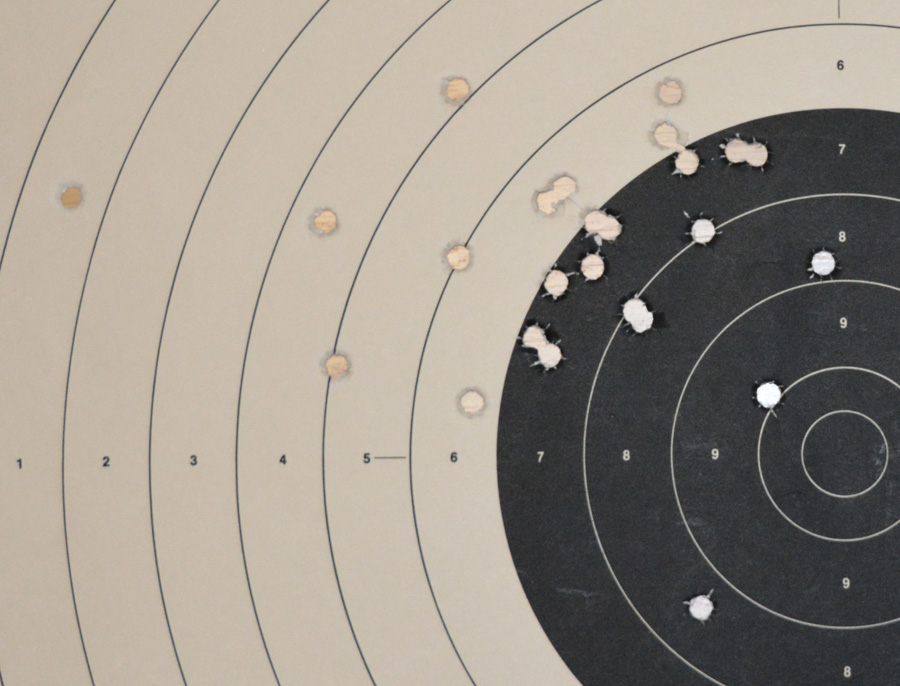
Federal RTP
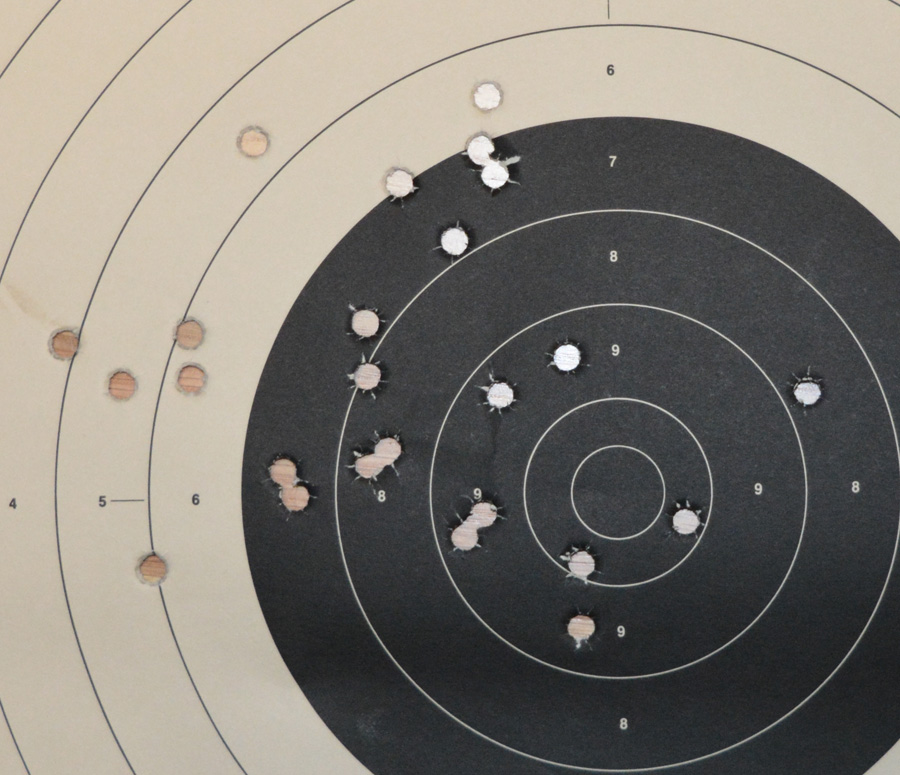
Wichester Ranger
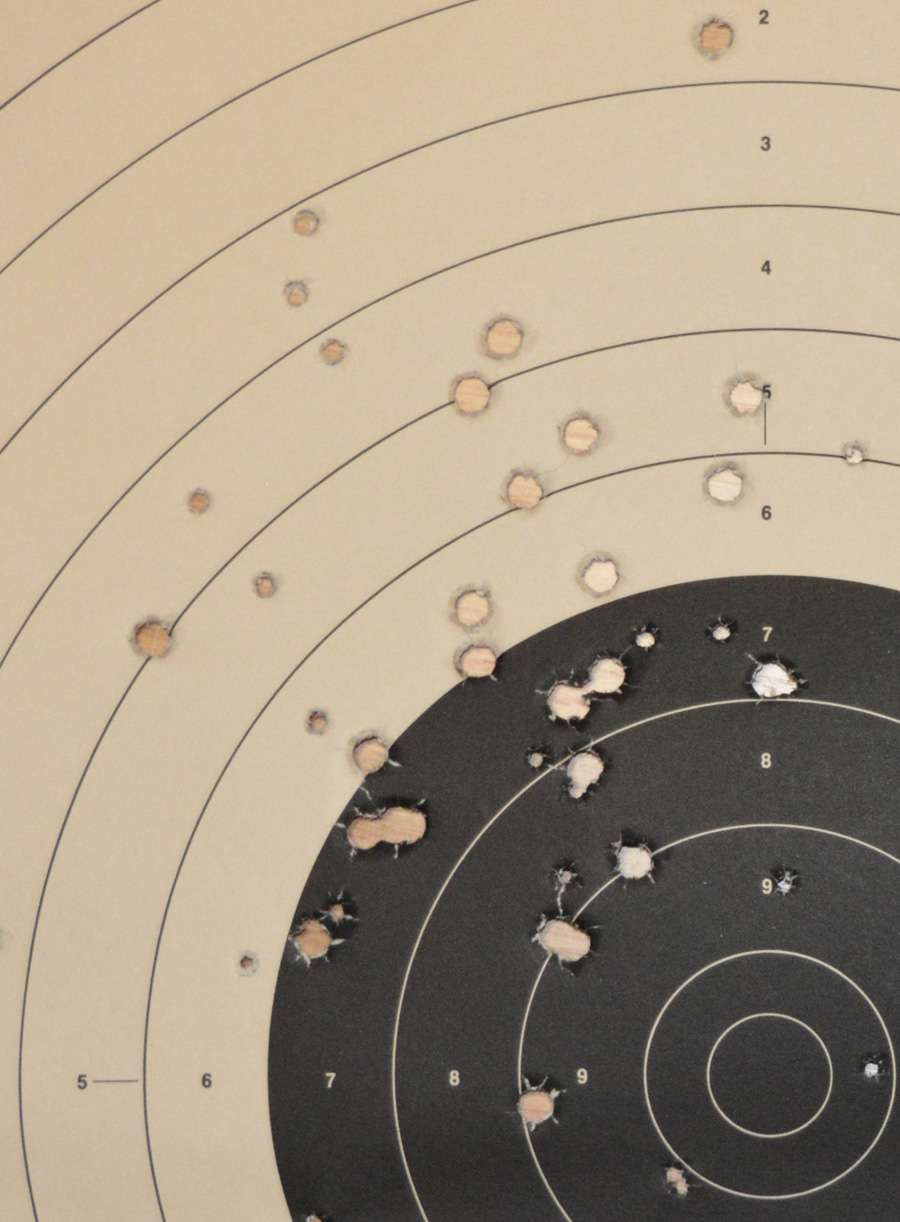
Ignore the 22lr shots on this one, I did not want to wait for a ceasefire and reused one of the
abandoned targets.
Target analysis
You will notice that there is a departure from how I measured accuracy in my previous blog posts. In the past,
I focused on group sizes. Group size is a very commonly accepted measure of accuracy in gun sports, because it
is easy to measure and reason about, and it - indirectly - answers the question: how widely will she shots disperse
if I am firing at a target.
Using groups as a measure of accuracy is not without problems, however.
To make the data statistically significant, a lot of groups must be shot, and the groups should have a large (at least 5)
shots in them. But measuring groups discards a lot of information that is available, only focusing on the two rounds
with the maximum spread between them.
Because of that, these two groups are identical from the accuracy analysis perspective, but it is intuitively obvious
that the firearm shooting group 1 is more accurate than the firearm shooting group 2.
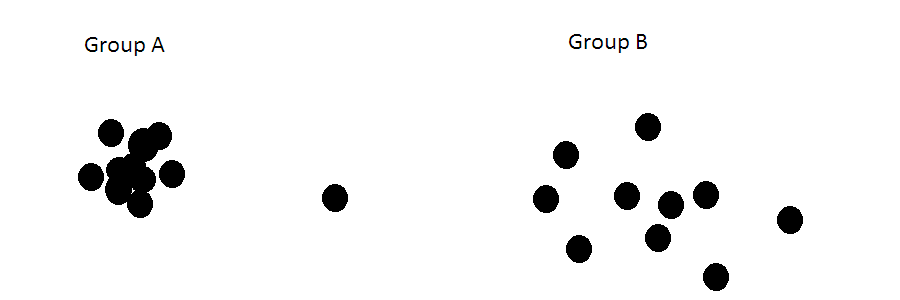
To compensate for this, people shoot a lot of groups, so fliers such as above are statistically eliminated. Shooting
a lot of groups from a smallish pistol is problematic however - the groups are large, which means a lot of space
is wasted, and a lot more ceasefires and trips to the target stand are required.
It would be much better if we could measure dispersion of each individual round - less shots are wasted, and the
question "how far is my shot likely to be off target" is answered more directly - if we measure the standard deviation
of each individual shot, we can say that each shot is 68% likely to be no more than one standard deviation away,
or 95% likely to be no more than two, or 99.8% likely to be no more than three.
(StatisticsForShooters.aspx">More here).
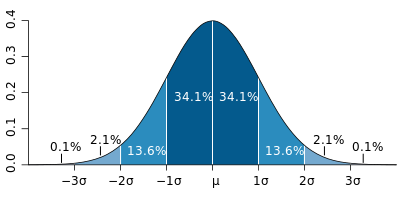
Of course, measuring coordinates of each shot is tedious work, and so - computers to the rescue! I wrote a tiny
program, available here which simplifies this a great deal.
So with this being said, on to the data!
CCI Blazer (aluminum casing)
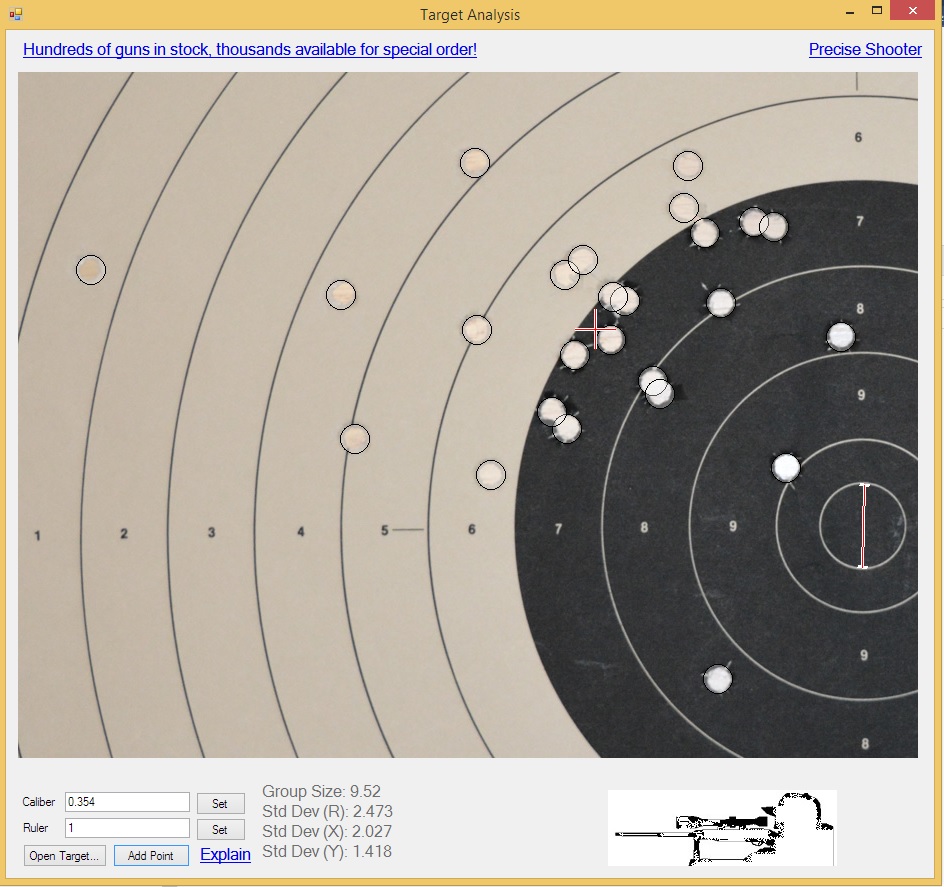
Federal RTP

Wichester Ranger

As you can see, the standard deviation is roughly 2.5" - meaning that 95 out of 100
shots will be within 5" radius circle at 25 yards, and only 0.2% of the shots - 2
in a thousand! - would be more than 7.5" away.
The groups (of 25) that I fired were around 9", thus keeping most of the shots with the properly
adjusted sights would be in the black.
Overall, I quite liked the gun. Though Performance Center was a big deal - much better than
unmodified Glocks, for example - most M&P triggers become as nice with wear - one of the reasons
why I like S&W surplus pistols. The gun can definitely be a great carry piece, and a nice
hiking companion in a cougar or even a black bear country.